Blog
A Note From Rick | Herb Garden Beauty
By Rick Bogusch
The Garden in June...
It’s amazing what a little rain will do! Bright colors and luscious scents abound throughout Bridge Gardens, but nowhere more apparent than in the herb garden.
When you visit this month, you’ll find poppies, infamous and beautiful, standing tall in the medicinal, ornamental and culinary beds. Prized for millennia for their beauty, their seeds are often sprinkled on bagels and used to flavor pastries and cakes. They are a favorite of all sorts of pollinators, especially bumble bees. Plus they are easy to grow - simply sprinkle seeds on the ground in February and March and watch them reach for the sun.
The medicinal bed also features valerian, an ingredient in Celestial Seasonings Sleepytime tea, and a beautiful array of bright fuschia- colored foxgloves, the original source of the heart medicine, digitalis. Foxgloves thrive in acidic soils and tolerate sun to partial shade. The first year offers a tall stem with leaves, but the second year will reward you with beautiful color and majestic height, as they tower over many other plants in the garden.
A central feature of our 4-quadrant herb garden is the beautiful boxwood knot, planted and shaped 30 years ago by Harry Neyens who started with 6” tall boxwood plants and gradually and patiently sculpted them into the rounds and garlands we see today.
Garden sage is prized for its savory flavor, its medicinal qualities, and its beauty. Greeks and Romans considered it to be a sacred plant with great healing properties, hence its Latin name, Salvia, which means “the healing plant.” An old proverb says,“Why should a man die who has sage in his garden?”
Looking towards the vegetable garden and our raspberry hedge, you’ll see Dame’s rocket, Hesperis matronalis, a naturalized biennial wildflower and member of the mustard family. It is easily grown in full sun or part shade by scattering seeds on relatively bare ground, but you’ll need to wait for 2 years to see the first blooms. After that, it will self-sow and spread.
Flowering onions, Alliums, are a great bulb investment. They return year after year - ours are at least 6 years old - and are not troubled by voles or deer. Though they prefer full sun, we have some that are doing quite well in shade. By choosing different species and varieties, you can have blooms from May well into June. The seed heads are quite attractive, so I leave them in the borders well into July.
Roses are late this year. You should expect peak flowering in the latter half of June, rather than the first half. The red and white flower in this photo is Cherry Parfait, one of the original roses planted by Jim Kilpatric many years ago! Our organic rose care series continued this past Saturday with a talk focused on pest control, proper watering, pruning and fertilizing as the roses come into their own. We have one more workshop planned for the series, to be held November 11 to help you “put the rose garden to bed” for the season. Mark your calendar!
Mark Bridgen of Cornell University’s Long Island Horticultural Research Center in Riverhead gave us several Alstroemeria or Peruvian lilies for trial. He has been breeding them for hardiness and seems to have been quite successful. Ours have come through 2 winters without protection and are flourishing again this season. Alstroemeria are great cut flowers, outlasting many others in a vase!
Our water feature was also built and planted by Bridge Gardens’ founders Harry and Jim during their time at the gardens. Charlene Strawn water lily blooms from June through September in this small pool and its lily pads are a favorite sunning spot for our resident frogs.
The cattails and the variegated water iris help keep the pool’s water clean without chemicals and aeration and provide a pleasant home for goldfish that overwinter each year.
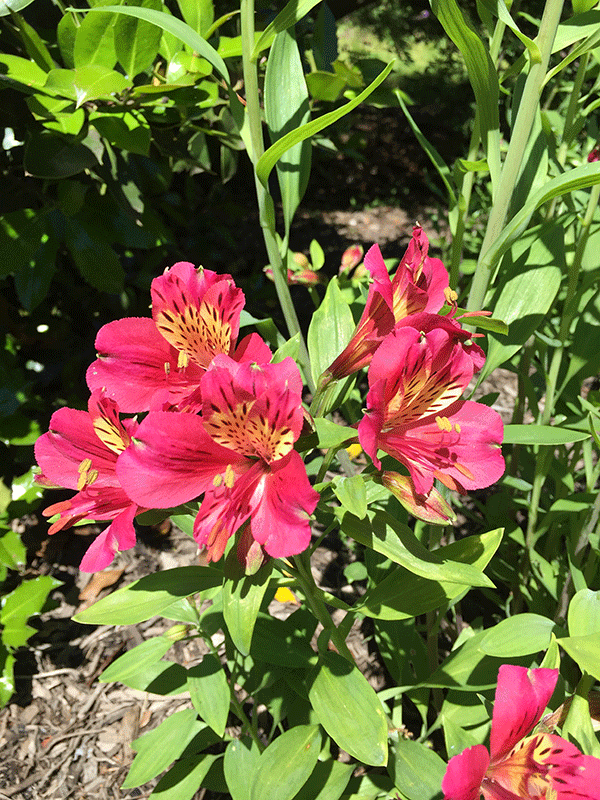
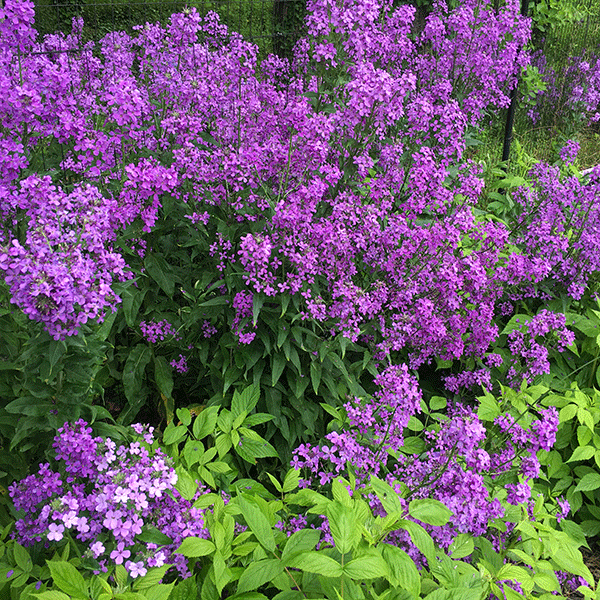
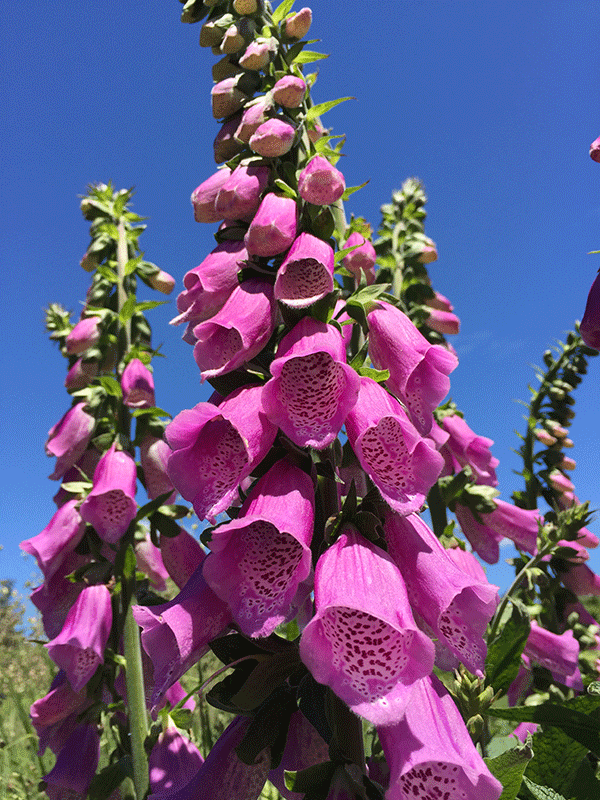
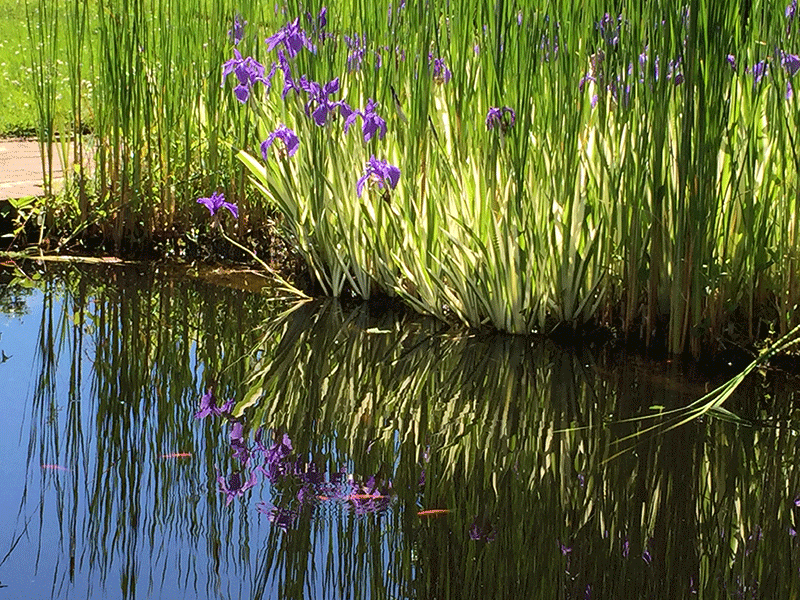
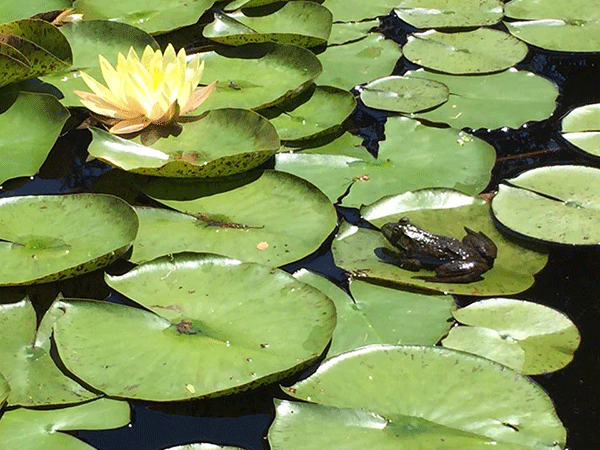
What should you be doing now?
- If you are growing your own food this year, it’s time to plant your tomatoes, eggplant, zucchini, peppers, basil, as well as cucumber, squash and beans. Night time temperatures have reached the minimum 50 degree threshold, so get your seedlings in this weekend if you haven’t already planted them. With this year’s cooler temperatures, many vegetables have been slow to get started.
- You may find potato beetles, cut worms, and slugs starting to show up to dine on your vegetables. A careful dusting of diatomaceous earth onto your plants will help control these pests.
- Strawberries are here - and so are sugar snap peas! Enjoy them while they last, their sweet taste makes for a delicious diversion while you work in your garden. While carrots and beans are not producing nearly as well as in past years, I am finding sugar snap peas and lettuce enjoying the cooler temperatures of May and early June. Now is a good time to plant a second row - or more - of lettuce, and plan a second sowing of sugar snap peas in August for a fall crop. As the sugar snap peas fade, replace them with pole beans like Fortex or the flat, Romano-types, like Helda.
- Weed, weed weed! Keep up the good work to remove unwelcome weeds that compete for space and rainwater in the garden. Your efforts will be rewarded with reduced weeding chores throughout the growing season. In the vegetable garden, consider adding a layer of straw between rows to smother weeds. I am thankful for steady weeding volunteers at the garden, like Susan, pictured here in the roses.
Stop in soon — for inspiration, motivation, or peaceful contemplation. Whatever your reason, visit and visit often!

